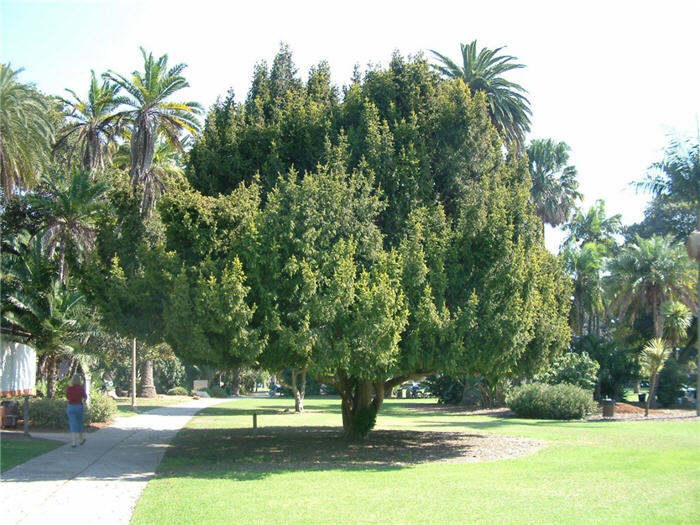| Botanical Name: Taxus baccata | |
| Common Name: English Yew |

-
Anatomy
-
Culture
-
Design
Plant Type
Tree, Shrub
Height Range
6-12', 12-25', 25-40'
Flower Color
White
Flower Season
Spring
Leaf Color
Dark Green
Bark Color
Brown, Red
Fruit Color
Red
Fruit Season
Fall
Sun
Half, Shade
Water
Medium, Extra in Summer
Growth Rate
Slow
Soil Type
Clay, Loam
Soil Condition
Average, Rich, Well-drained, Moist
Soil pH
Neutral
Adverse Factors
Poisonous
Design Styles
English Cottage, Formal, Japanese, Mediterranean
Accenting Features
n/a
Seasonal Interest
Winter
Location Uses
Background, Shrub Border, Foundation, Walls / Fences
Special Uses
Hedge, Screen, Topiary, Wind Break
Attracts Wildlife
Birds
Information by: Stephanie Duer
Photographer:
Photographer:
-
Description
-
Notes
English yew is a slow growing evergreen that will eventually reach 30 feet tall and 15 feet wide, though this will take a very long time. This is the yew so popular in English topiary gardens and as hedges. Here, with our hot dry summers, it probably will never attain that stature. Lustrous, flat-needled, dark green foliage is attractive year round. Young shoots emerge light green. Although classified as a conifer, female yews (plants are dioecious) do not produce cones, but instead produce red, attractive, berry-like fruits, each having a single seed almost completely surrounded by a fleshy red aril. Birds will feed on the berry-like fruits; fruits are toxic to humans.
Best grown in evenly moist, fertile, sandy-loam to clay-loam soils with excellent drainage in part to full shade. Tolerant of considerable pruning, though if pruned selectively, rather than sheared will preserve its natural form, reduce future pruning work, and allow you to enjoy the bright breen new foliage.